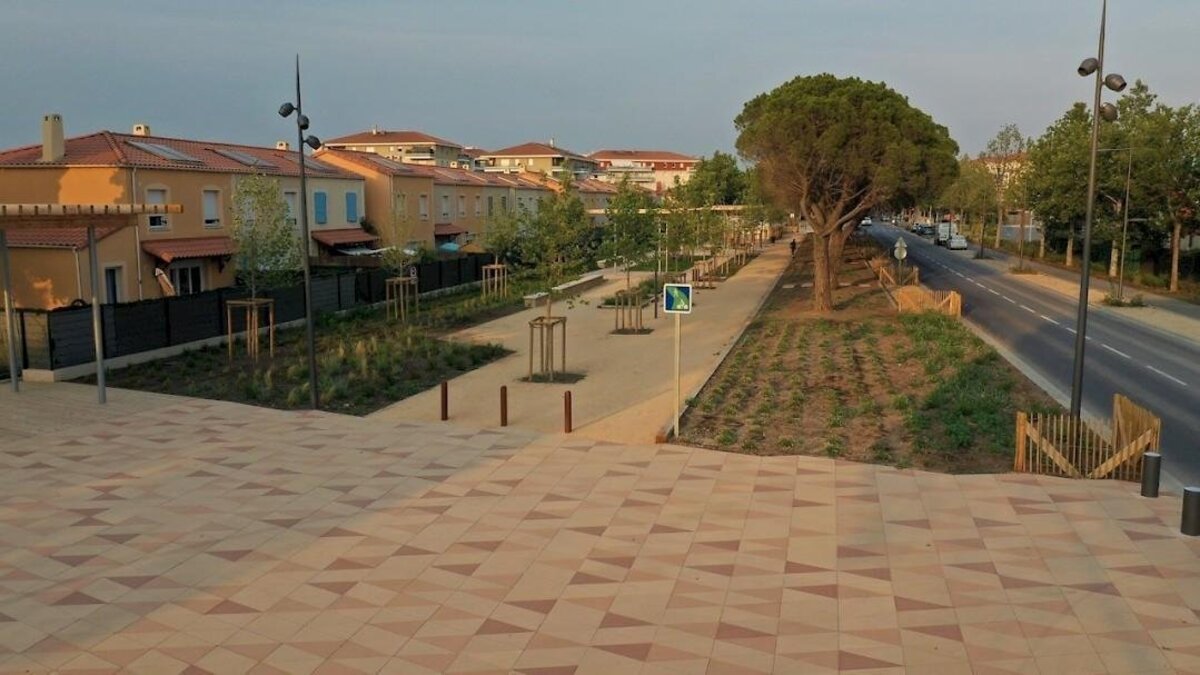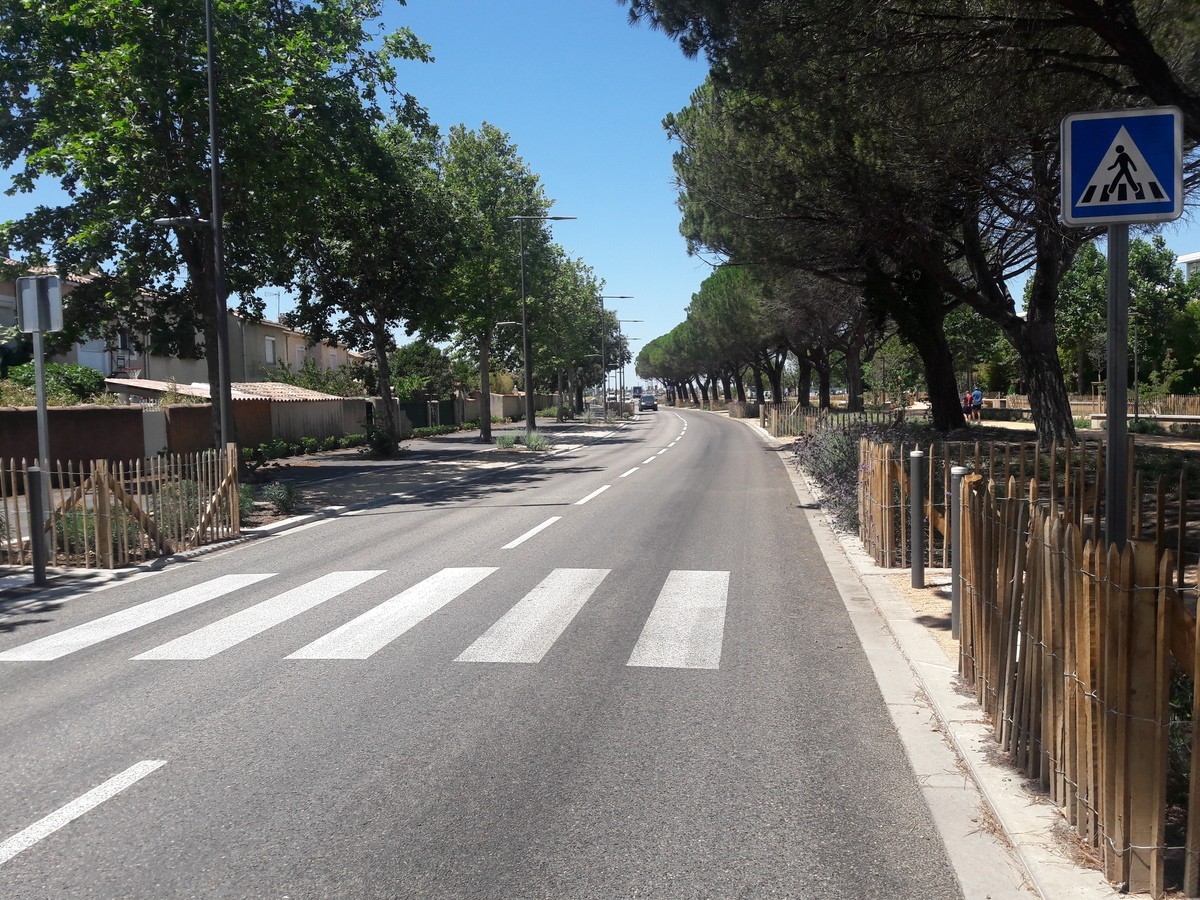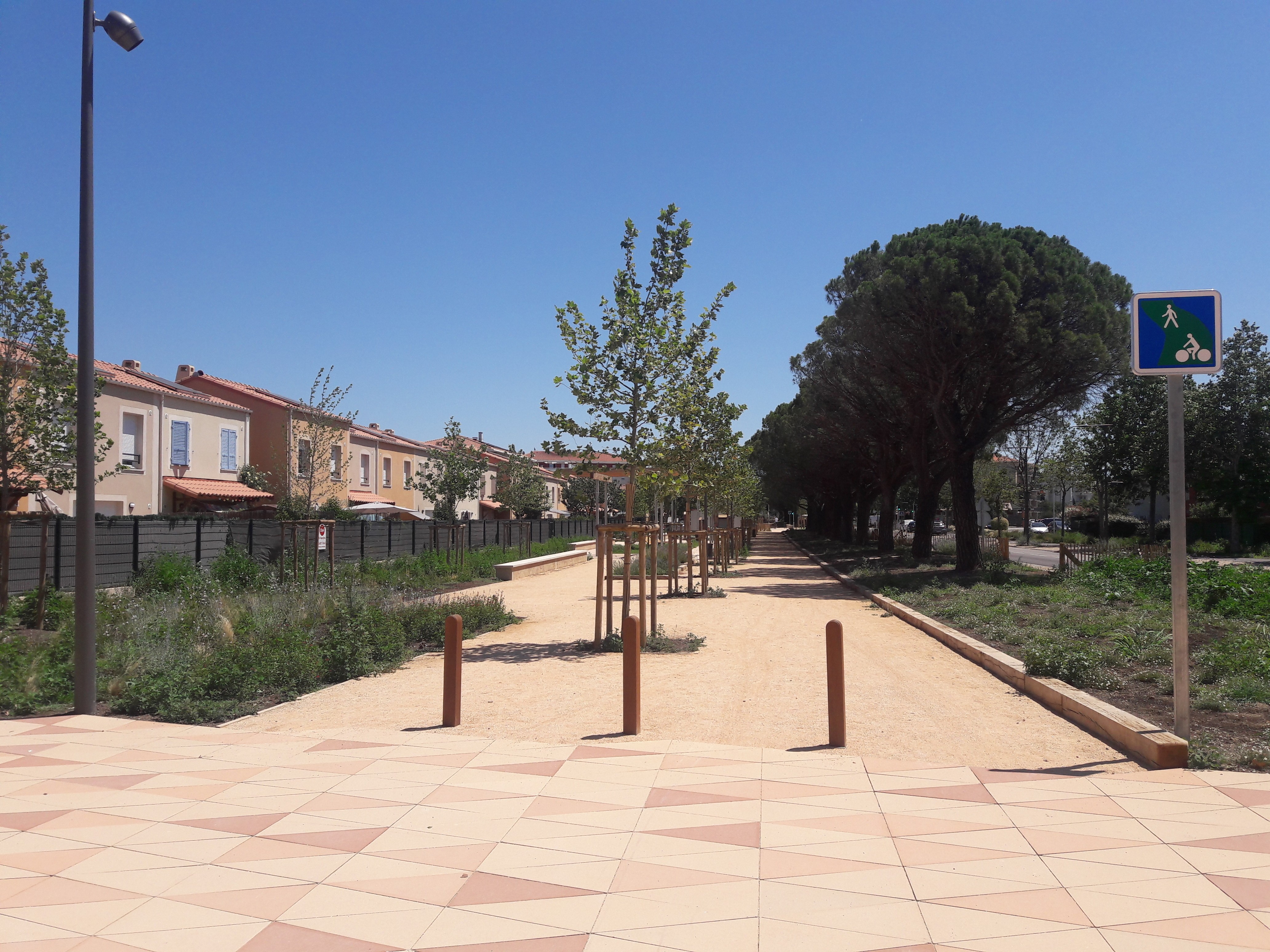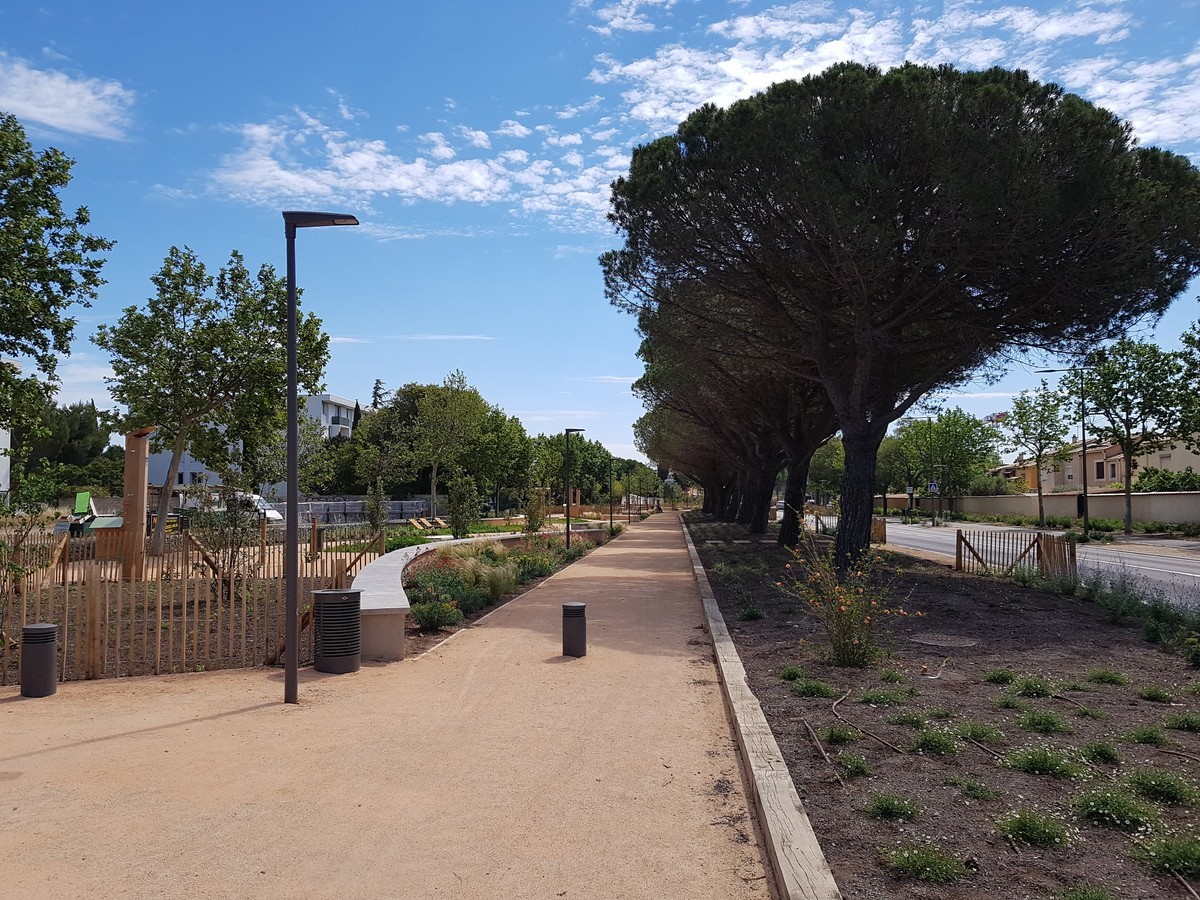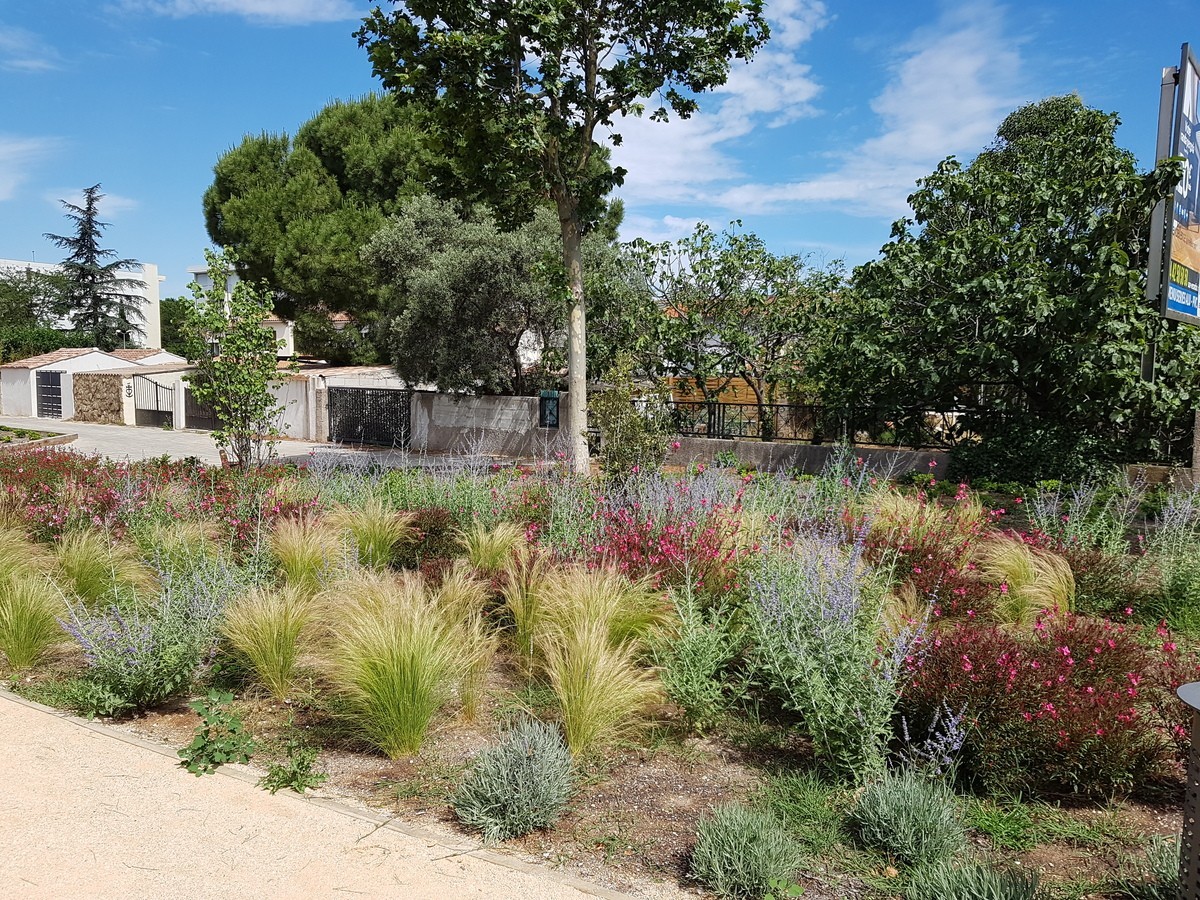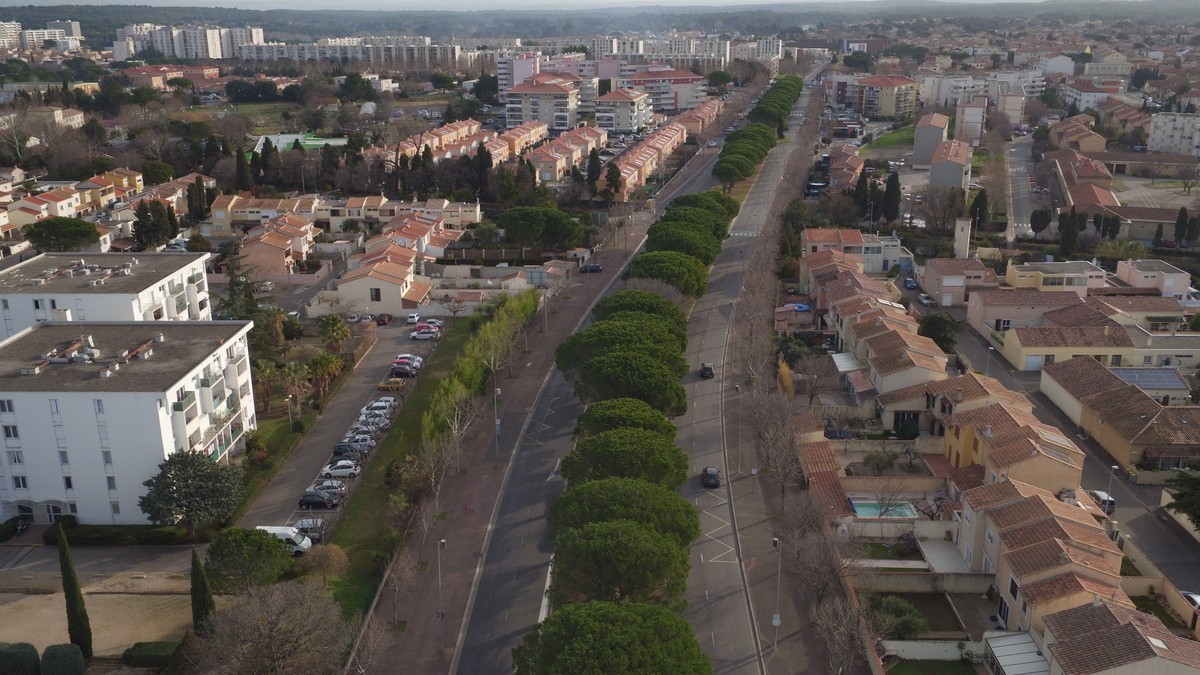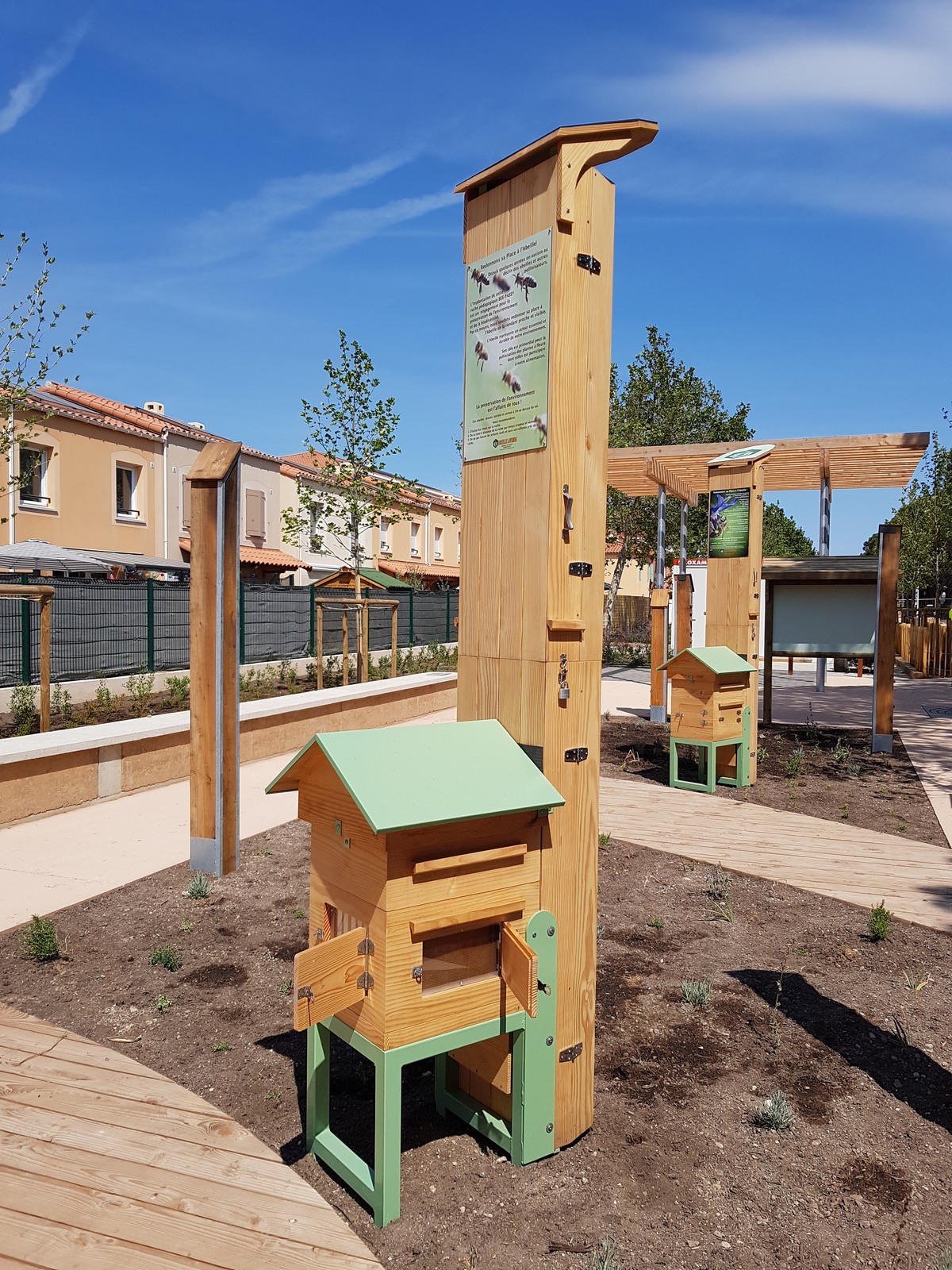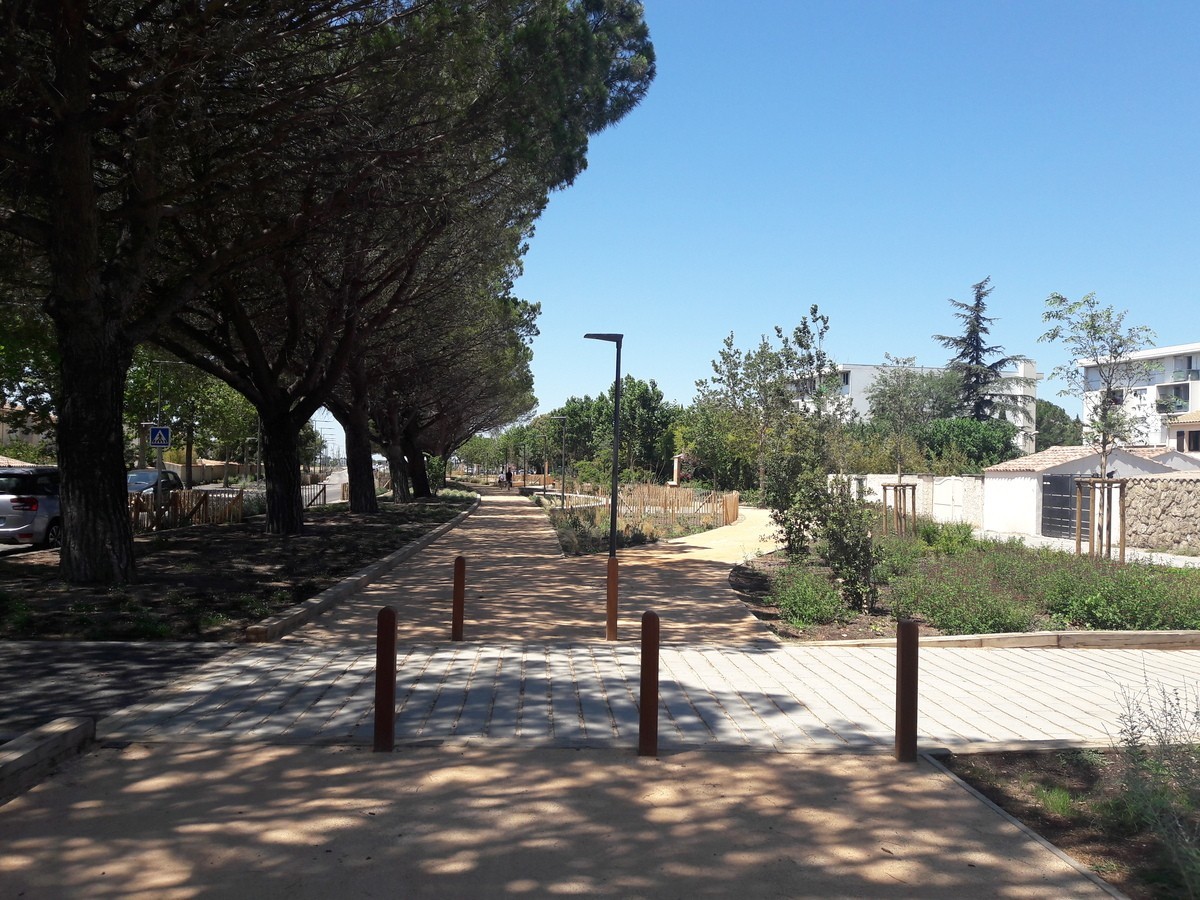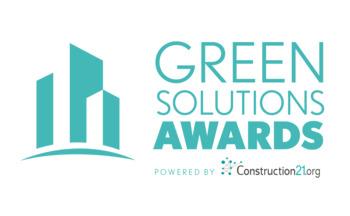Redevelopment of boulevard Aubanel in Miramas
Last modified by the author on 26/03/2021 - 19:26
- Year of commitment : 2019
- Address 1 - street : Boulevard Théodore Aubane 13140 MIRAMAS, France
- Diameter : 30000
- Green energies : Energy Efficiency
- Sustainable mobility : Intra-urban mobility, Greenways, Pedestrian Mobility, Urban roads, Soft modes of transport, Bicycle path
- Water cycle : Rain water, Other
- Circular economy and waste management : Circular economy, Eco-Design, Optimization of ressources, Bio-based materials
- Biodiversity & Ecosystems : / Urban ecosystem, Green and blue corridor, Ecoystem restauration, Ground recovery, Environment education /
-
3 800 000 €
- Builder
LAQUET, EIFFAGE TP - Manager / Dealer
City of Miramas
This redevelopment consisted of transforming a 2x2 city entrance lane into a 2x1 lane by maximizing the waterproofing of the roadway and transforming it into a green promenade.
The project has been the subject of environmental optimization on 6 axes: water management, energy savings, urban biodiversity, circular economy, soft mobility, adaptation to climate change.
Progress Status
Delivered
Data Reliability
Self-declared
Funding Type
Public
Website Enterprise / Infrastructure
https://www.cylea.fr/actualites/livraison-du-chantier-zac-de-la-peronne/Sustainable Development
Testimony / Feedback
The project has already been recognized for two reasons:
- first, in 2019, by the French competition Capitals of Biodiversity, which since 2010, identifies, develops and disseminates best actions carried out by municipalities and intermunicipal French in favor of biodiversity. The project was selected in the catalog of exemplary actions of 2019.
- then, in 2020, by the Institute of Roads, Streets and Infrastructures for Mobility (IDRRIM) which awarded it the Infrastructures for Mobility, Biodiversity and Landscapes prize with the Special Mention of the jury ; the IMBP prize highlights the links between biodiversity and landscapes, rewards the best projects carried out, in France or internationally, by the actors involved in the design, construction, management, maintenance, development, requalification and operation of mobility infrastructures in favor of the preservation, restoration and enhancement of ecosystems and biodiversity.
Governance
EPAD West Provence
Public Local Firm
LAQUET, EIFFAGE TP
Construction Industry
City of Miramas
Public
The urban community has conceded the EPAD Ouest Provence. Governance is therefore tripartite between EPAD, SAN Ouest Provence and the city of Miramas.
Boulevard Aubanel is included in the ZAC de la Peronne; its financing is ensured in the balance sheet of the ZAC.
It has received grants from the Bouches du Rhône Department on the one hand and the RMC Water Agency on the other.
Sustainable Solutions
- Water management
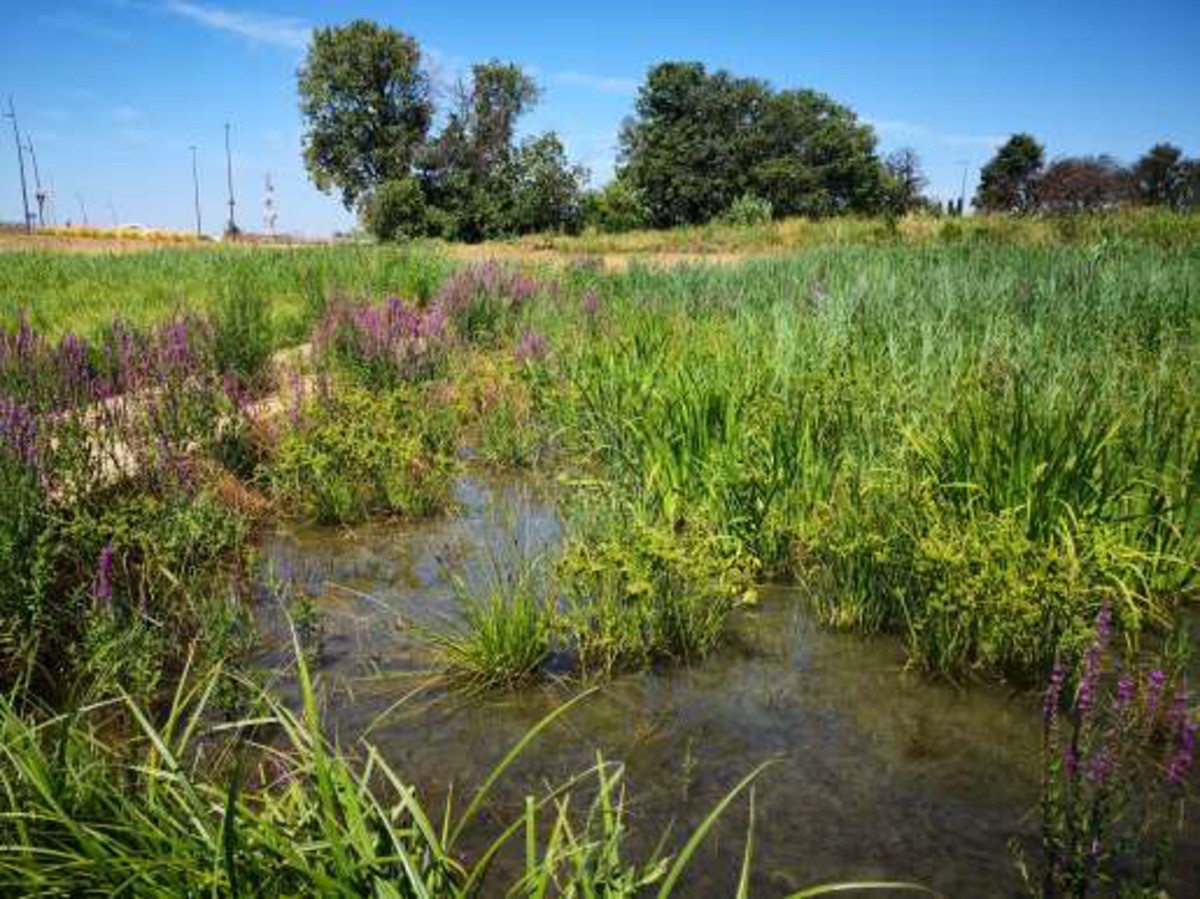
Site-wide stormwater management
The solutions implemented are:
- De-waterproofing of the road with a stabilized sand coating and revegetation of the old road;
- Longitudinal parking was carried out in a mixture of stone and earth covered with GNT;
- An alternative management of rainwater: execution of the basins allow infiltration directly into the water table.
The very important draining properties of the materials chosen, and the execution of the basins contribute to the reconstitution of the natural water cycle by promoting its in-situ infiltration.
These solutions make it possible to respond effectively to the challenges of resilience of the community's stormwater networks in the event of an episode of heavy rains. They also contribute to the fight against urban heat islands , conventionally encountered in city entrances.
- Other
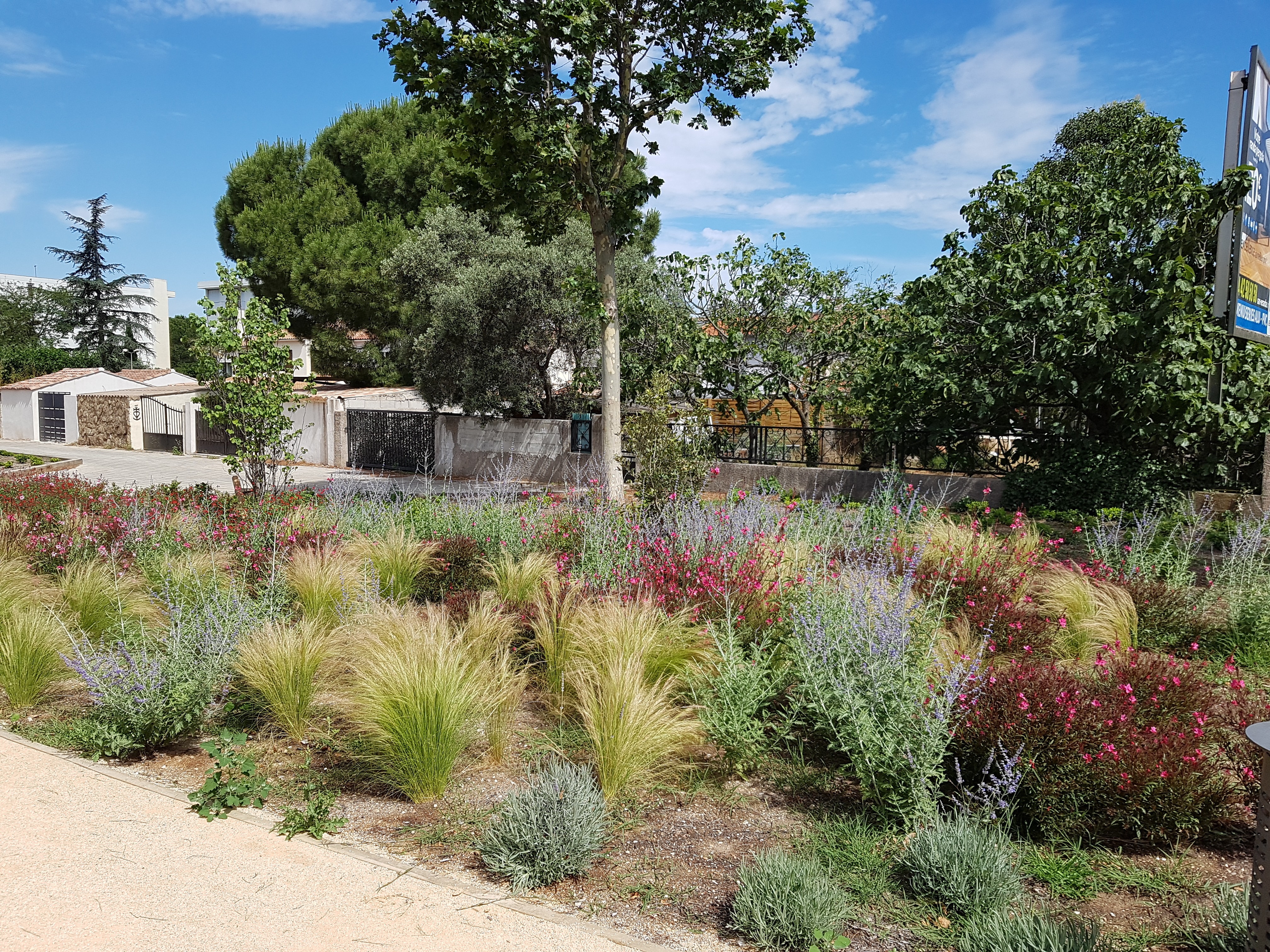
Promote the development of urban biodiversity
The solutions implemented are:
- Preservation of existing vegetation by conserving the existing trees on the site
- Reinforcement of the green network with the planting of more than 38,000 plants of all sizes, including meliferous plants
- Creation of a nature education zone: a botanical garden, a bird garden and shelters for insects to ensure respect for the spaces created by the users of the promenade;
- Reduction of light pollution with directional LED lighting and reduced thanks to the use of a lighter coating.
Preserving biodiversity is an integral part of reducing environmental damage. Preserving existing vegetation helps mitigate the impacts of infrastructure while preserving the quality of the landscape.
The creation of a nature education zone educates residents and children about the place of these animals in our environments, and allows these species to be reintegrated into an urbanized environment.
The reduction in light pollution also promotes the richness of the ecosystem made up of nocturnal fauna.
- Low-carbon materials/ infrastructure
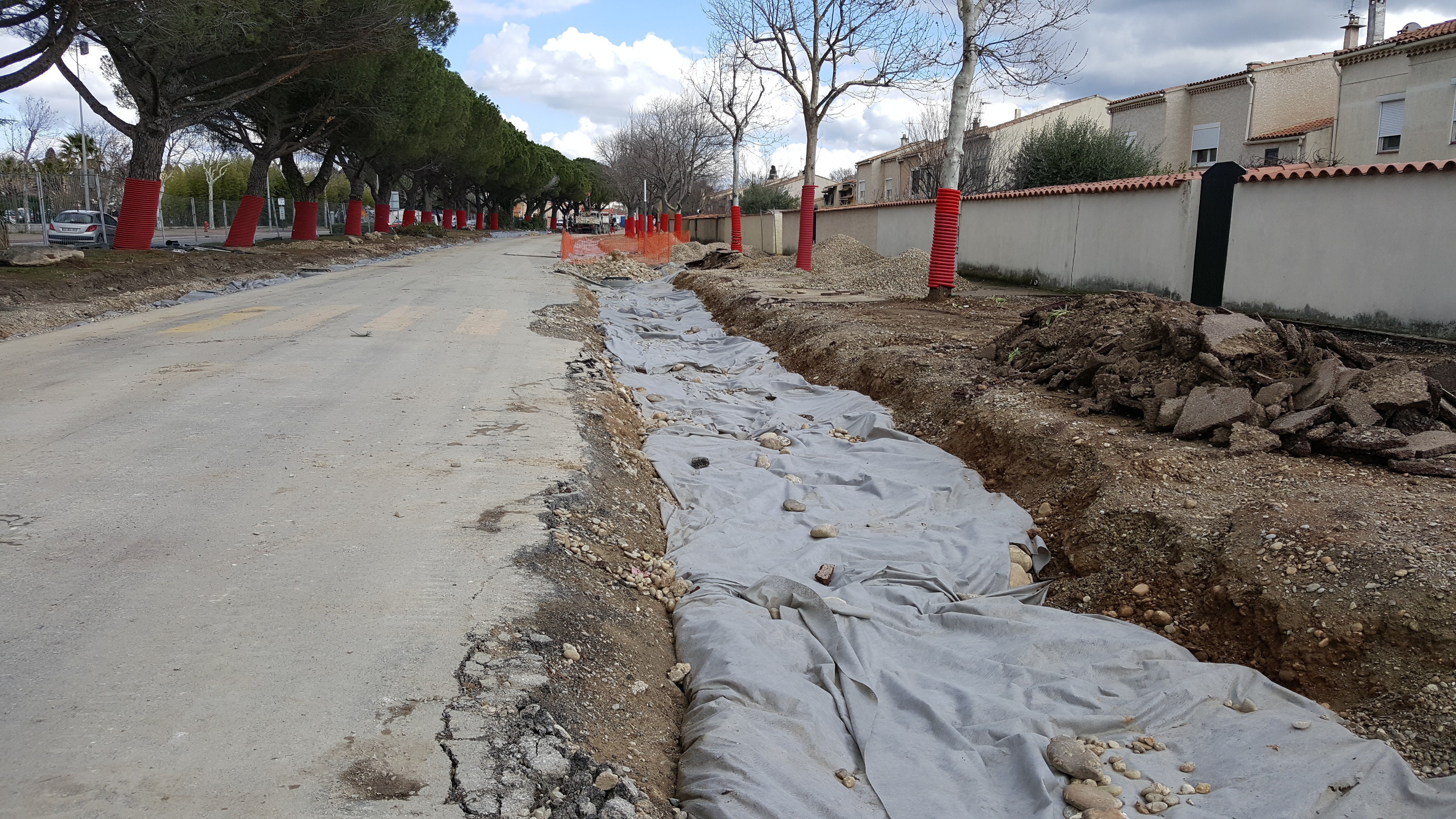
Use of materials from the circular economy and rehabilitation of existing structures
The solutions implemented are:
- raw earth structures (walls and benches) built with the earth from the site and pebble structures from the site have consequently avoided volumes (approximately 1200 m3 x2) of materials to be evacuated and delivered to the site , and therefore avoid CO2 emissions.
- the asphalt has been thinned out compared to a traditional arrangement to allow the level of night lighting to be lowered.
- the base of one of the existing pavements has been preserved (no deep earthworks), only the surface coating has been redone.
Avoiding the landfill of materials resulting from site deconstruction lengthens their life cycle and preserves non-renewable natural resources, one of the main challenges of the circular economy which aims to increase the efficiency of the use of resources.
Photo credit
Suez Consulting
Reasons for participating in the competition(s)
L'excellence environnementale déclinée selon 6 grandes thématiques :
- la gestion de l'eau : La désimperméabilisation du boulevard a concerné plus de 8.000 m². La gestion alternative des eaux pluviales a également été mise en oeuvre avec une déconnexion partielle de la voirie du réseau d'eaux pluviales de la commune et la réalisation de bassins d'infiltration dimensionnés pour une pluie de retour 50 ans.
- les économies d'énergie : Au-delà des lanternes à LED, l'éclaircicement des revêtements a permis de réduire de 30% supplémentaire la puissance installée pour l’éclairage de la voirie pour une performance lumineuse égale
- la biodiversité urbaine : Avec la conservation des alignements de pins parasol, de platanes, la plantations de plus de 38.000 nouveaux plants de toutes tailles et l'installation d'abri à insectes permet de créer un véritable éco-système urbain. La zone d’éducation à la nature comprenant un jardin botanique et un jardin des oiseaux appuie cette démarche
- l'économie circulaire : la réalisation de bancs et de murs en terre crue a permis d’éviter l’évacuation de 1.200 m3 de matériaux argileux, impropres à l'usage en remblai de voirie
- la mobilité douce : la création d’une voie verte de 800ml indépendante de la circulation générale qui permet l’accès au centre-ville et participe au maillage modes doux du quartier
- l'adaptation au changement climatique : la création d'un parc urbain renforcant les plantations existantes et le choix de revêtements drainants possédant un albédo moins élevé permet de renforcer l’effet d’îlot de fraicheur et la résilience des plantations.
Building candidate in the category





